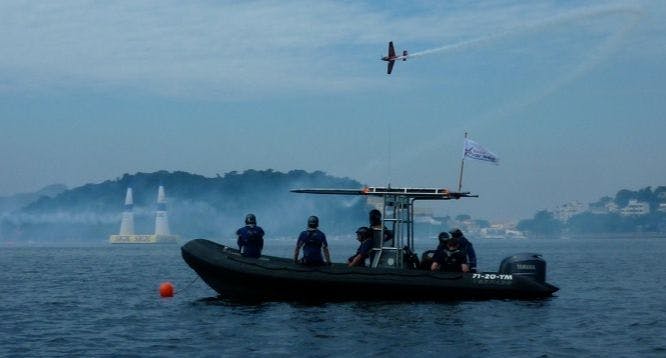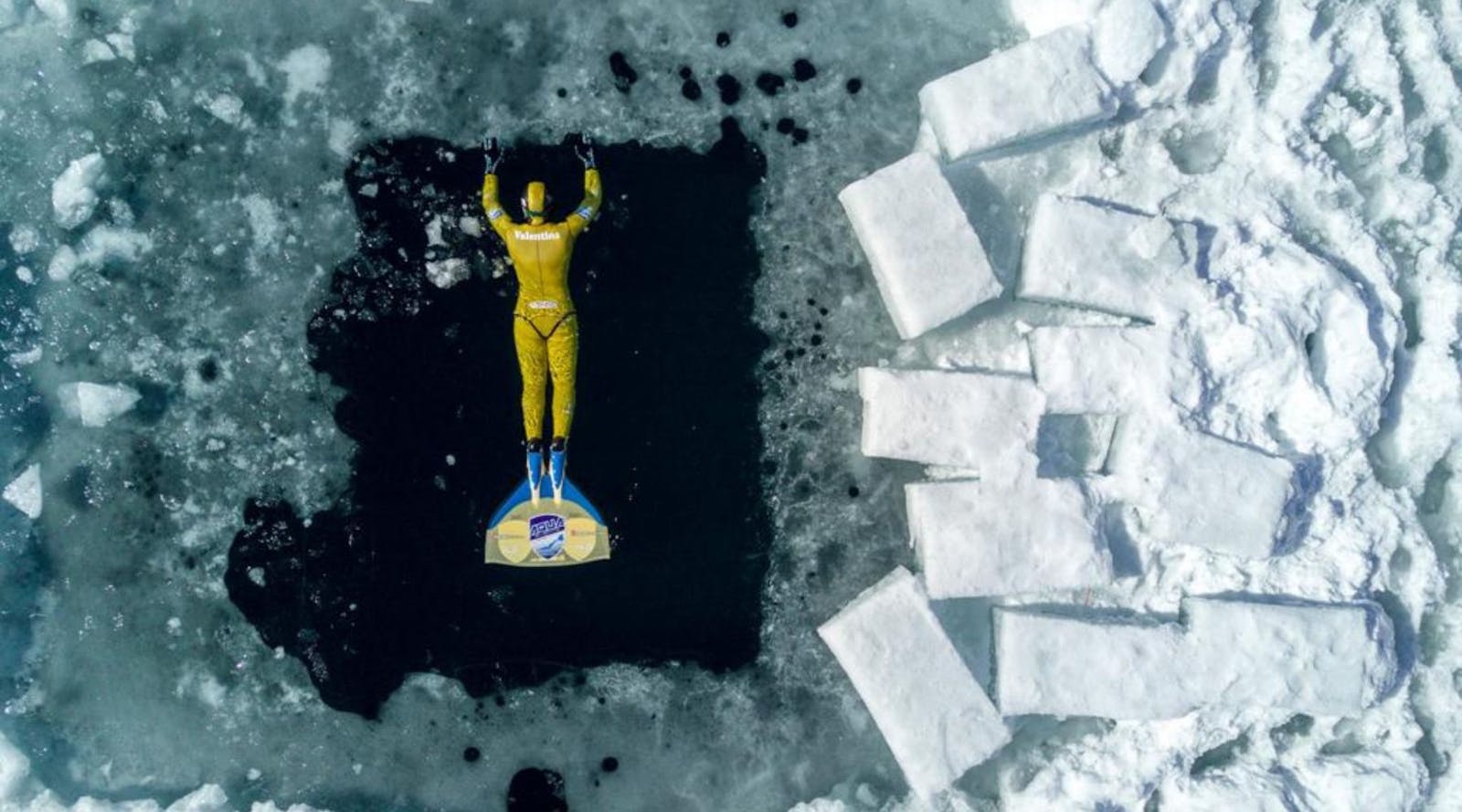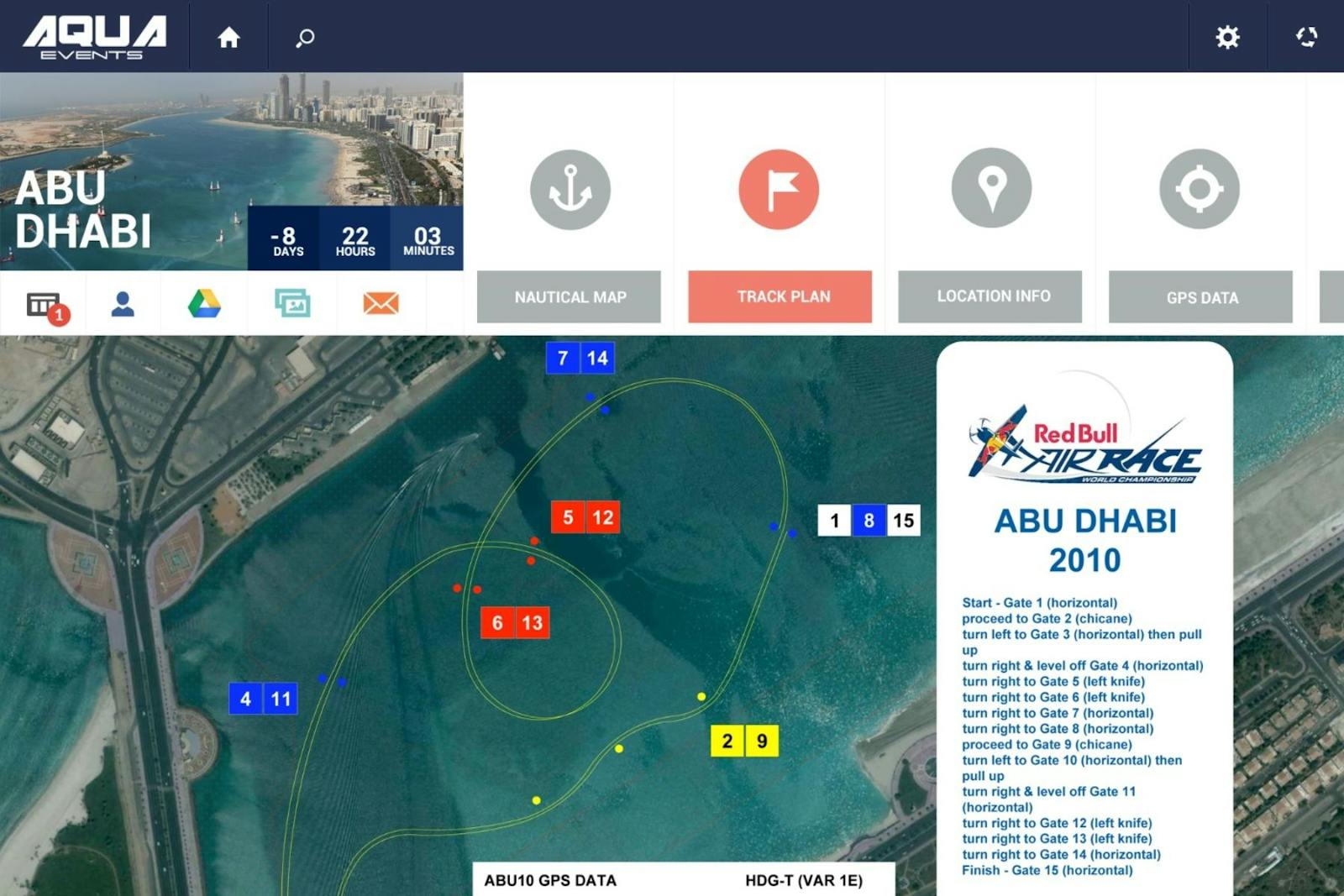From Entrepreneur to Entrepreneur - #1 Marko van Es and Aqua Events
Blog
Top performance on the water, to make the impossible possible
In this first edition of From Entrepreneur to Entrepreneur, Jeroen visits Marko van Es, founder of Aqua Events and also Jeroen's very first client. That Marko van Es was an entrepreneur soon became clear. In 1985, as a 16-year-old, he founded his first company, selling CDs, regularly outdoing the Free Record Shop. But that he would become the mastermind behind, among other things, the pontoons of the Red Bull Air Race or the floating city at Monaco's Formula 1? That was, as he himself puts it, "a confluence of circumstances". It shows Marko's modest nature but doesn’t do justice to his nose for spotting opportunities in new developments and niche markets. With Aqua Events, he jumped into a gap, which turned out to be the gateway to a huge, worldwide adventure.
Entrepreneurship lesson #1. As a pioneering entrepeneur, you are (almost) always screwed
"Boy, I’ve done all kinds of things, and that has always cost a lot of money," Marko laughs loudly. "It started with those CDs, and CDs fell under art, so that meant you could set the price yourself. My father was always very accommodating, so when I said I had an idea to start selling CDs, he said, 'yes, that’s fine, go ahead and do some good business.’ I would put an ad in the newspaper, offering a CD for a few guilders less than the Free Record Shop. I then brought those CDs around on my bike. My phone number was in the ad, so when I was sixteen and a half, the boss of the Free Record Shop phoned angrily. Of course, he saw those ads too! Then I came up with CD tower, where you could put fifty CDs upright. I had them made and sprayed them myself in all kinds of colours. That was one big disaster. The whole garage was full of CD towers, but I didn't sell a single one. When CD towers did become a success, sometime later, I was already working on something else."
With another venture, already a little closer to the water, Marko focused on importing kites, for kitesurfing. "I went to Oregon, and there was a guy there, who worked for Boeing, and he had invented a kite that you could water ski behind. I was an avid windsurfer - just like Jeroen – and water skier, so I thought it was cool. Then I borrowed some money from my father and bought a lot of those things. 'As long as you pay it back,' he said. De Telegraaf newspaper then published, a day before I was going on holiday to France, a whole page about me and that kite skiing, because that's what it was called back then. My phone number was on the bottom of the page. That week in France, I was called 1,300 times! When kite skiing became really popular a year and a half later, it was over right away," Marko chuckles. "By then you had those inflatable kites, while my kites still had a system with tubes and a bicycle handbrake!"

Entrepreneurship lesson #2. Solving problems for customers makes you valuable
The entrepreneur behind Harborn, Jeroen Soeterbroek, describes Marko as "the absolute pioneer, in many areas". However, the route towards Aqua Events was a bit different. Perhaps because Marko was exactly on time with this. Moreover, it was an extension of his father's activities: wet contracting (maritime and construction services on and under water). "I was working in the office at my father's company, a shipping company in Rotterdam. We were in pontoons, offshore, building bridges, tugs." Marko explains how the ball started rolling. "What happened: we got a call from the organisers of the World Port Days, asking if we might want to sponsor tugs and a pontoon for a demonstration by the fire brigade. We did, and I coordinated that. The following year, in addition to that demonstration, they also wanted a stage, so we came up with a plan for that too and did that. That got bigger and bigger: people called us when something had to be done on the water, because they knew it would be good. At one point, the Dance Parade came, asking us to get 80,000 people from one side to the other in four hours. The solution we came up with for this, a temporary bridge that remained stationary in the Schiehaven, got a lot of attention. But at the same time, it was the most natural thing in the world for us. That was the moment I thought: I can do this for all events. It really was a niche, because within two years Aqua Events had a hundred clients!"
Through his company, Marko worked for various events, artists and even film productions. He was responsible for the closing ceremony of the European Championship in 2000, a grand concert on the Maas in Rotterdam with dancing cranes and fireworks. Together with a team, he comes up with the wildest ideas, which he implemented with an arsenal of equipment, the fastest RIBs (rigid inflatable boats), and a bunch of well-attuned on-call staff. Until that moment when Red Bull brings its iconic Air Race to Rotterdam and ends up at Aqua Events. "That came at exactly the right time," says Marko. "A ship had just arrived with an order of brand-new pontoons, which I could use. Additionally, the first Air Race in Budapest, which someone else had done, had not gone well because the pontoons drifted away on the fast-flowing Danube. And I was able to solve that." What Red Bull needed were ten stable pontoons with pylons over 20 metres high, in the Maas river. That formed the course full of bends, through which the stunt planes skim. Marko and his team get it right: the race is a great success.

Entrepreneurship lesson #3. If you really believe in it, don't hesitate to change your plans
"Shortly after that, the CEO of the Red Bull Air Race asked if I wanted to do it again, but in San Francisco," That was much more difficult, with hired personnel and equipment, and due to the presence of sea lions, who preyed on the data cables. "That second race was less successful," confesses Marko. "But I also learned from that. And eventually, it became eight races a year." It marked the end of what Marko had built up in the Netherlands. "The hundred clients I had, I let them go with pain in my heart, except for a few, like Sail and the Volvo Ocean Race. Before the Air Race, I was away from home 280 days a year. That just didn't work." From that moment on, Marko was the man for all races, whether in Perth, Abu Dhabi or Budapest. During that time, Harborn built a Racetrack Application, which allows the Air Races to be accurately planned down to the last minute. And that is necessary, Marko explains. "I did the race in Budapest ten times. That was literally a military operation. The Danube was only allowed to close for three hours. While we had one day of training, one day of qualifying and one day for the race and it took me ten days to build a racetrack. That was not allowed. We had 55 minutes until the first plane flew, to get ten pontoons, each with two 20-metre-high pylons, in place. A normal company would say 'you're crazy'. But we said, 'okay, what do we need to make this happen?' We asked for two hundred men from the Hungarian army and trained for days at a different spot on the river, until we had every aspect under control. When we got there, we got the pontoons fixed in exactly 55 minutes. That was super cool."

A crash (without casualties) during a training session brought the Air Race to a temporary halt in 2010. There was no race for over three years, so much of the work was lost. The shipping containers full of equipment remained and Marko suggested to his now permanent staff that they start a new company. In what, they choose together. It’s drones. The first professional drone company in the Netherlands. "We had seen them in America, and saw possibilities for aerial monitoring," says Marko. Setting up the company means pioneering again, this time alongside the operations of Aqua Events. "I really believed in inspecting objects from the air, but when I took it to the fire brigade, they said, 'what should we do with it?' It was only after two years that things started to run smoothly. But there was also a lot of competition. Then we switched: first we flew ourselves and had a bus with displays. Then we helped other companies deploy drones. Because we were the first to have a licence, we had a huge head start. As a result, we wrote the operations manual for several government departments, among other things. Even the fire brigade is now using drones! Another lesson from this? "Focus on one thing," laughs Marko. In 2013, the Air Race resumed. The drone business, including the webshop built by Harborn, was sold a few years later.

Entrepreneurship lesson #4. Honesty is the best policy
Marko has now been working for Red Bull for more than 20 years. Because of his work for the Air Race, he is asked for Formula 1. In Monaco, he builds the floating city, where the drivers stay during the race. All these years he remains loyal to Red Bull, and Red Bull to him. The key to that, says Marko, is honesty. "Not only from me, but especially from Red Bull. I dared to take risks because they always pay their bills on time. That event has to happen, so if you don't take action in time, it won't work. I've certainly had anxious moments, when we had to spend huge sums of money, and nothing was on paper yet. I wouldn't recommend that either. But I do think that's why I've been doing what makes me really happy for so long. I’m very open, everyone can see what I’m asking for and what I’m doing for it. Harborn has that too, by the way, which is why things have been going so well between us for so long!" Marko laughs. "If I said something really couldn't be done, Red Bull would say: okay, what do you need so that it can be done? That's great, but you lose that position if you abuse it even once. I've seen that often enough."

Entrepreneurship lesson #5. You're never too small to think big
Back to 1999, the year Aqua Events was founded. Marko is standing with a RIB at a boat fair in Rotterdam. Jeroen Soeterbroek, as a 19-year-old student, has a side job at the same fair, with another boat seller. After some banter back and forth, Marko asks Jeroen to join him on his boat at the end of the day. Jeroen talks about his plans to start an internet company, Marko about his Aqua Events. Jeroen: "I soon realised that I could really learn a lot from Marko. Like a younger brother, I pulled myself up to him.” Marko commissioned Jeroen to build his first website. From that moment on, their paths never parted. "If he had new ideas, he would call me," Jeroen laughs. "And I often asked him for advice too." What the two recognise in each other? "I think both of us are never 'off'," says Marko. "We are always working on creating new things." "And then thinking about it 100,000 times over," Jeroen adds. Whether it's a concept for a company, a business-critical application or a new way of doing things, you're never too small to think big. "But," says Marko, "the idea is 1%, the implementation is the rest." "That's what Marko is really good at," says Jeroen. "If he believes in something, he goes all the way to work it out, even if no one has asked for it." It’s exactly what makes Marko successful as an entrepreneur, but at the same time the most elusive. It may even be the key to entrepreneurship. "I think I have a bit of an abnormality," laughs Marko. "I can't help it: when I see something on TV, I immediately think about how I would solve it."
Jeroen
Would you like more information?
Would you like to read more interesting stories? See our insights
Jeroen would like to tell you more: